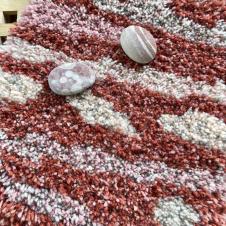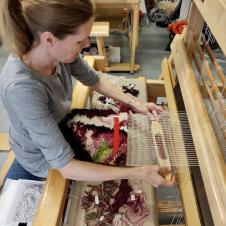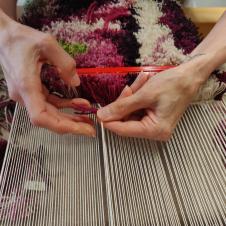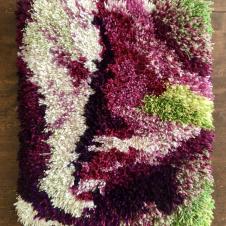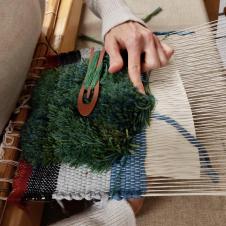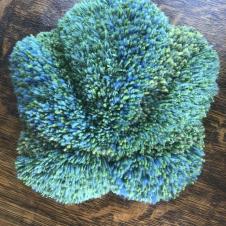
Echoes from Finland
My name is Lisa Wiitala, and I live in a place in the United States called the Keweenaw Peninsula, where over thirty percent of the residents are of Finnish descent. Located in the northernmost part of the state of Michigan, this was where a large number of Finns immigrated starting in the mid-1800s, hoping to find work in the copper mines and surrounding towns. All eight of my great-grandparents came to the Keweenaw from Finland, from villages that included Alavus, Suomussalmi, Keuruu and Pudasjärvi.
The city that I live in, Hancock, celebrates its Finnish heritage in many ways, including festivals throughout the year - there is Ruska in the fall, Heikinpäivä in the winter, and Juhannus in the summer when a large kokko is built along the shore of Lake Superior. The street signs in Hancock are in both Finnish and English, and Finnish flags hang alongside the American flag from the light poles on the main street. There are businesses with names like the Nisu Bakery, Kaleva Café, and Ilo Craft Store. Hancock is also home to the Finnish American Heritage Center as well as the Finnish American Folk School where students like myself can learn traditional Nordic crafts.
Weaver grandmother
My grandmother, Lilja, was a weaver of rag rugs, or räsymatot, during the 1950s and 1960s. She made them from old clothing people had donated to her, and she sold hundreds of these rugs. I still have a few of them; they have lasted a long time because they were very well-made. About ten years ago I started researching my family’s history, and this led to my acquiring Lilja’s loom from the old family farm. I had no idea how it worked or how to weave; she had never taught me how, but a few years later I was able to take a weaving class, and it was exciting to finally make rag rugs the way my grandmother once had, and using her loom.
The rya rug technique
While taking that weaving class I was also introduced to rya rugs (or ryijy as they are known in the Finnish language). Traditionally, a rya is made by knotting tufts of yarn, usually wool yarn, along the warp strings of a loom. The result is a shaggy, plush surface that is pleasing to touch. Rya weaving has often been described as painting with yarn, and it is possible to create imagery in a design, though the result is somewhat abstract. The rya rug has been called the unofficial national textile of Finland, but because very few of the Finnish immigrants wove them after coming to America, most people where I live have never heard of them. I want this to change, and so I applied for a folk artist’s grant through the American Scandinavian Foundation that would allow me to travel to Finland to learn more about them. I also contacted the Friends of Finnish Handicraft, Suomen Käsityön Ystävät, and they helped me to find a master weaver, Ulla Karsikas, to teach me advanced rya techniques.
My journey to Finland
At the start of August I arrived in Tapiola to begin my studies at Omnia, Espoo Adult Education Centre, using a Finnish-made Toika loom generously lent to me by the Weaving Studio. For three weeks I studied with Ulla, learning different ways to create a design template, how to choose yarns and color combinations that blend well and achieve the right density, and how to properly finish a rug after being removed from the loom. I also learned to weave a rya in a shape other than rectangular, and how to use different lengths of yarn to create a transitioning of height along the surface. During my time at Omnia, I wove a total of three ryas - I tied a lot of knots in a short amount of time!
Making rya rugs
As with many Finnish artists, I find my design ideas in nature. Of those three ryas, the first was inspired by the colors and patterns found in Jacobsville sandstone, a common type of rock where I live. Another was woven in the shape of a thimbleberry leaf - the thimbleberry is prized in North American but does not grow in Finland. The third rya was based off of a photo I took of a peony flower bud in my garden. To weave this rya, I used twenty-four different color combinations and followed an intricate graph of the image that served as a color guide. It is also interesting to note that the peony flowers in my garden came from my grandmother Lilja’s old garden, where I dug them up from among the weeds several years ago, and so in a way, she helped me make this rya.
My experience in Finland
While at Espoo Adult Education Centre I enjoyed talking with some of the other weavers about their projects. Many were making räsymatot and I told them I could hear how strong the rugs would be without having to actually see them; the sound of the beater on the loom repeatedly slamming forward meant the rugs would be well-made and long-lasting. It was nice to see people learning other crafting techniques in neighboring classrooms as well, including eco-printing and quilting. I also enjoyed walking around Tapiola and Helsinki, visiting the yarn shops and the many museums where amazing examples of handicraft and other artwork were on display. Seeing some of the famous Finnish paintings at the Ateneum was like meeting celebrities.
This was the first time that a member of my family has returned to Finland since my great-grandparents left long ago, and I know my ancestors would be proud of what I have accomplished with my weaving. Someday I hope to return to visit the small towns where they were born and to explore the forests and the countryside.
I would like to thank the American Scandinavian Foundation for funding my studies in Finland, and master rya weaver Ulla Karsikas for her knowledge and guidance during my time in Tapiola. Also “kiitos” to the Omnia, Espoo Adult Education Centre for allowing me use of a loom and workspace and to Ritva Kurittu-Kalaja, a teacher at the center, for all of her help. Now that I have returned to the United States I am excited to teach rya weaving to others; I know they will enjoy practicing this traditional Nordic craft as much as I do.
Text: Lisa Wiitala
Photos: Lisa Wiitala, Ulla Karsikas
Joy of Learning
This article belongs to Joy of Learning blog series.


